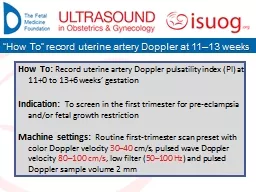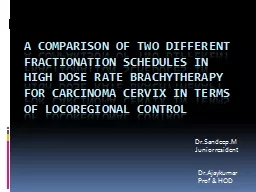PPT-Carcinoma of the Cervix
Author : briana-ranney | Published Date : 2017-03-28
Epidemiology for women aged 20 to 39 years cervical cancer remained the second leading cause of cancer deaths after breast cancer accounting for about 10 of cancer
Presentation Embed Code
Download Presentation
Download Presentation The PPT/PDF document "Carcinoma of the Cervix" is the property of its rightful owner. Permission is granted to download and print the materials on this website for personal, non-commercial use only, and to display it on your personal computer provided you do not modify the materials and that you retain all copyright notices contained in the materials. By downloading content from our website, you accept the terms of this agreement.
Carcinoma of the Cervix: Transcript
Download Rules Of Document
"Carcinoma of the Cervix"The content belongs to its owner. You may download and print it for personal use, without modification, and keep all copyright notices. By downloading, you agree to these terms.
Related Documents














